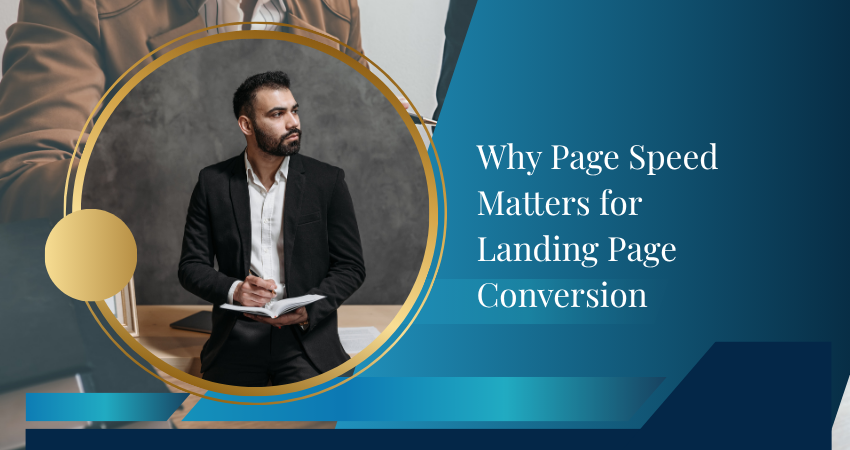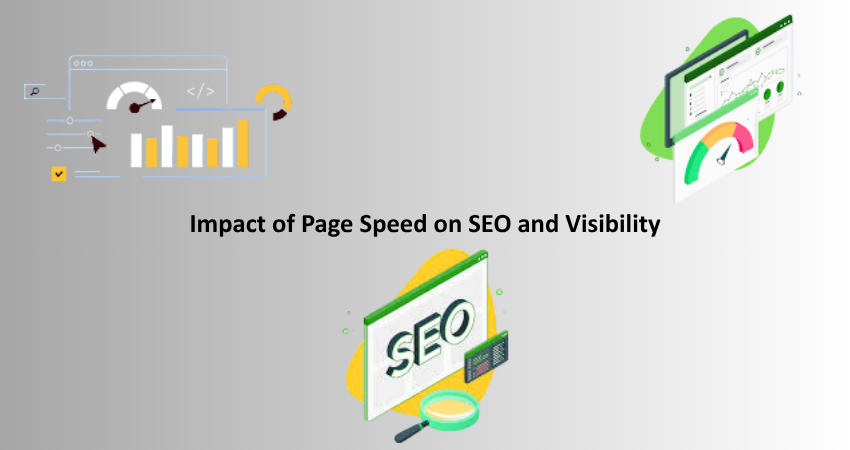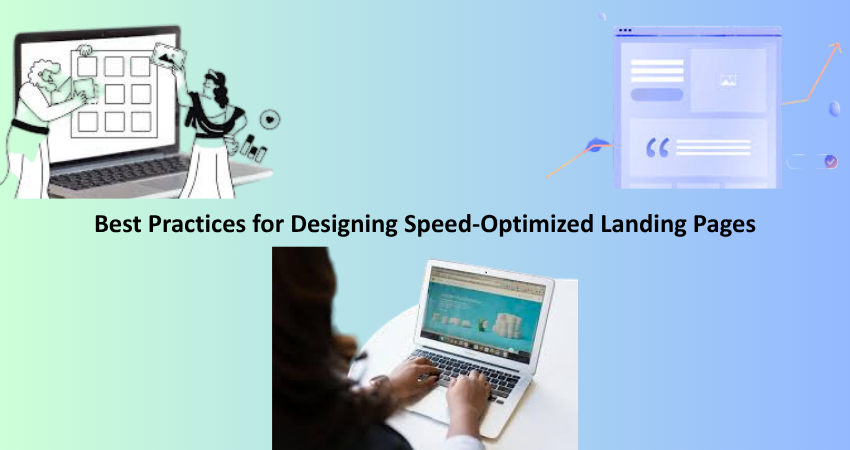
Introduction
As far as any outside view goes, landing pages in the digital marketing arena are synonymous with the front door to your brand. Thus, they provide visitors with insight regarding your products, services, or any value proposition. These pages’ performance is very crucial and directly impacts how well you are able to convert visitor traffic into leads or customers. One of the most important aspects relevant for this performance is page speed. When a landing page loads fast, it results in a good user experience, less bounce, and better conversion rates. On the other hand, a slow-loading page means lost traffic and engagement, with a strong possibility of bad trust, which in return probably renders your marketing campaigns less effective.
And since mobile users account for a considerable share of web traffic, expectations for speedy and seamless experiences have never been higher. Page speed has found its way into search engine ranking algorithms, further amplifying its significance. The digital marketing community, developers, UX designers, and business owners need to understand dramatically why page speed relates to landing page conversion, in order to focus on improving online performance and ROI. This article explains how page speed affects user behavior, search ranking, and conversion rate, and how to optimize those aspects.
The Connection Between Page Speed and User Behavior
First Impressions and User Experience
The page speed gives the very first impression to users about your brand, and it has been proven through studies that users set up their evaluations on a website in the first few seconds of interaction. Therefore, if the landing page spurts lengthy uploads, all the interested visitors might get drained by the instance before they can glance at the offer. This leads to a negative impression and reduces the professionalism and credibility of the brand in the eyes of the visitors. Notably, a fast loading landing page represents efficiency, trustworthiness, and user-oriented design, all essential components that are directly related to creating a favorable brand experience.
Speed is intrinsic to user experience. Slow pages snag user flow and shake smoothness in the flow of conversions. For example, if a landing page goes on to ask a visitor to sign up for a newsletter or fill out some basic information, the opening of that form takes too long to create hassle for users by not allowing them to complete the action. Speed contributes to smoother and pleasurable browsing that encourages users to stay longer; more interactions will yield higher conversions. Thus, shorter load times will eliminate barriers between the user and the goal outcome, smoothing the way from initially visiting the site to becoming a satisfied customer.
Bounce Rates and Abandonment
Bounce rate is the measure of visitors who leave a website after only one page visit. A considerable bounce rate often indicates a void between the expectations of the visitors and what they experience. There are various factors that influence the bounce rates, among which the loading of a page is an important aspect. If it takes longer than a few seconds for a landing page to load, most users hit the back button to find another competitor’s site. Such action not only decreases your chances of conversions but also signals search engines that your content may not offer any value, which affects your SEO ranking.
Abandonment is bad, especially when it comes to mobile contexts, wherein users are even less patient. Many of the users then reach the landing pages via paid ads meaning their arisen session terminations would just mean wasted ad spend and loss of opportunities. Hence, improving the page speed has a way of greatly reducing abandonment in that it contains content in an instant, thus meeting up with user expectation. Fast loading pages keep users interested and allow them more time to get your message, consider your offers, and take action. Hence, page speed optimization is not just about performance but about providing an environment where conversions are more probable.
Impact of Page Speed on SEO and Visibility

Google Ranking Factors and Core Web Vitals
Page speed is one of the well-known factors in Google’s ranking algorithm. In fact, over the years, Google has put a stronger weight on user experience through parameters known as Core Web Vitals. This includes Largest Contentful Paint (LCP), First Input Delay (FID), and Cumulative Layout Shift (CLS), which all refer either directly or indirectly to page speed. A landing webpage that fails all these metrics could reduce its visibility on Google’s search results, making it difficult for potential customers to find it organically.
Optimizing your Core Web Vitals won’t only improve your SEO score; it will align your website with the modern web as per the internet standards. Actionable recommendations for performance improvement can be obtained from Google’s PageSpeed Insights and Lighthouse tools. Factors such as image optimization, server response times, and script management are essential for bringing up scores. All this means that marketers are now assured to deliver their landing pages faster while creating a smooth and engaging experience that would satisfy both users and search engines.
Organic Traffic and Competitive Advantage
One more element influencing the volume and quality of your organic traffic is page speed. When performance metrics propel a higher rank for your landing page, it moves closer into the view of searching users with the same or related keywords. Visibility translates into click-through rates and further qualified traffic. On the other hand, fast-loading websites gain more leverage over their slower incumbents. In scenarios where end users draw comparisons from other interventions, should the one site visibly shores above the rest, the users will generally tend toward the faster-loading site.
Putting the advantages of search front and center translates into more earnings. A faster page means more traffic, longer engagement, and conversions. It projects your brand as ahead of its game in terms of technology and responsive to user needs. The search engines, meanwhile, are continuously improving algorithms around user experience. To this end, fast page-loading will remain an important differentiator moving forward. Any penny you invest speeding up your pages will pay back for the direct conversion and search visibility gains in the end.
How Page Speed Influences Conversion Rates
Conversion Funnel Efficiency
The conversion funnel is a journey from awareness to action along many paths. If page loading is there, then each point on this funnel is an opportunity for users to drop out. For example, if an action is delayed in rendering on your landing page-the call to action (CTA)-then users may lose interest or confidence and leave the page before any action. Page speed is critical to funnel effectiveness; it speaks loudly about the ability and speed with which a user can perform actions at each stage.
However, when pages open quickly, users can see value propositions immediately, navigate to additional information, and engage with CTAs without delay. This “frictionless” experience increases the likelihood that users will perform the required action-such as signing up for something, purchasing something, or filling in a form. So any marketer who optimizes speed will also reduce friction in the Funnel, making that journey for the user fluent. The quicker the funnel gets users through, the higher probability they will convert-it’s speed that makes the call in Performance Marketing.
Trust, Credibility, and User Perception
Usability is not the only thing affected by speed; it sways the psychological perception of your brand as well. A fast-loading site is construed as credible, professional, and secure. Conversely, users who experience a slow-loading site will begin to have doubts about the competence and trustworthiness of the business. Within the context of a landing page- where the primary purpose is to inspire actions instantly- this kind of perception can make or break your results. Users would be more inclined to trust and convert on a site that provides an experience without delays. Slow pages are the cause of such questions as “Is this site secure?”, “Is it broken?”, and “Will my payment go through?” Such doubts have the potential of derailing the best-offered products. Fast pages, on the other hand, will trigger an emotional positive response which determines purchasing decisions. A responsive landing page helps build credibility and assurance which are both needed to drive conversions. In a digital environment where competition is rife, losing a second can translate into revenue loss and bad brand perception.
It is slow, and it can either create doubts such as “Is this site secure,”, “Is it broken,” or “Will my payment go through?” It can have a very short life span even for the best offer. Fast pages will invoke typical positive emotional responses that largely determine the purchase decision. Such a page should be responsive and translate into building credibility and confidence, which together help in attracting conversions. If a second is lost in this competitive world, it can lead to revenue loss and bad brand perception.
Tools and Strategies to Improve Page Speed
Performance Testing and Monitoring Tools
To work towards increasing the speed of any landing page, the first step is to evaluate existing performance status using a reliable web testing tool. Among many others, Google PageSpeed Insights ranks among the most popularly utilized website testing dimensions, assigning performance scores and providing actionable recommendations for both desktop and mobile versions of a displayed page. Tools like Lighthouse, WebPageTest, and GTmetrix assist in providing a skilled examination of performance bottlenecks, ranging from server response time to resource loading and JavaScript execution. Hence, the diagnosis of these problems and working toward their solution will be achievable.
The monitoring part cannot be neglected, as page speed can, of course, be affected by content, plugins, server loads, or even external scripts. Having performance tracking in place along with benchmarks would allow you to catch problems before they become detrimental to users and conversions. This should ensure speed stays on top of the priority list in the website’s whole lifecycle. It will equally help establish whether your optimization got it squared away.
Optimization Techniques for Faster Pages
After identifying speed issues, one can apply several optimization techniques to make time-of-loading better. Image optimization comes first. After all, images must be compressed and sized according to their containers. The modern format, WebP, can then be used for further reduction in size. To lessen the number of HTTP requests, large third-party scripts should be limited, CSS/JavaScript files combined as much as possible, and the use of HTTP requests minimized.
Implement lazy loading so that only the above-the-fold content is loaded initially. Everything else loads as the user goes scrolling down. By using content delivery networks (CDNs), users receive assets served from servers that are closest to them, thereby shortening latency. More steps are browser caching, GZIP compression, and reducing unused CSS and JavaScript-all much more influential in terms of page speed. Each little tweak towards optimization makes your landing page faster and efficient, thus improving also its potential for conversion.
Best Practices for Designing Speed-Optimized Landing Pages

Mobile-First Design and Responsiveness
The mobile users represent an enormous part of the Internet traffic, hence, mobile-first is a necessity for design. An optimized landing page really goes further than the user preferences; it also ranks high in Google’s mobile-first indexing. For speed on mobile, use responsive design concepts which ensure that layout and media are customized to different screen sizes. No needless elements that are not significant in conversion. Such should ensure text is read without zoom.
Use, where possible, scalable vector graphics (SVGs) rather than heavy attached media, in fact, for the least possible use. Testing your landing page in several devices and across many screen sizes will guarantee it of uniform experience. The result aimed for is equal attributes in styling with functional performance. That means delivering the best mobile-first performance allows for increasing user satisfaction while maximizing opportunities for conversion in a growing segment that expects gratification on the go.
Minimalism and Prioritizing Key Elements
Visitors to a cluttered landing page are met with fast loading pages. Minimizing means getting rid of needless parts, leaving to focus on what is most important-the value proposition, supporting visuals, and the direct call to action. A minimalist approach will also boost the performance of the code, pull down the weight of assets, and is clear even to the less technically minded user.
Processing the load for some content-the critical ones-first-before others, such as above-the-fold headlines, CTAs, and hero images. Asynchronous load setup is applied to minor elements, which can be excessively loaded after making the main contents open to viewers. The former would satisfy the user’s engagement with his primary message while background scripts are still loading. An optimum combination would ensure the visual appeal and performance improvement towards making an easy-to-use, high-converting landing page experience.
Conclusion
Today’s page speed is not merely for technical talks and reserved for developers; rather, it is more of a strategic requirement. It directly plays a role house user experience impacts, search visibility, as well as even conversion rates. A fast loading landing page allows the smooth flowing of an engaging experience that motivates users to stay, browse, and act on the page. On the other hand, a slow page frustrates the user, increases bounce rates, and hence loses the trust in your brand worth. Every second counts in a competitive digital environment where attention spans are really short and options at hand are more.
Understanding the nexus between page speed and landing page conversion empowers marketers and developers to think performance optimally. Yet every improvement to page speed pays off, from optimizing load times and utilizing performance tools to adopting a mobile-first design and minimalist layouts. Ultimately, faster pages will be a win-win for all: happier users and improved rankings in SEO and conversions. Investing in speed is indeed investing in success.